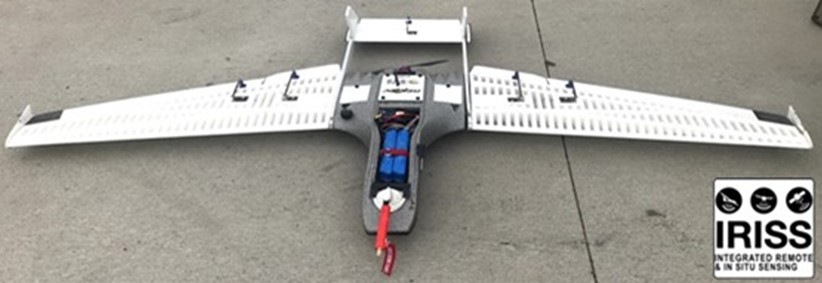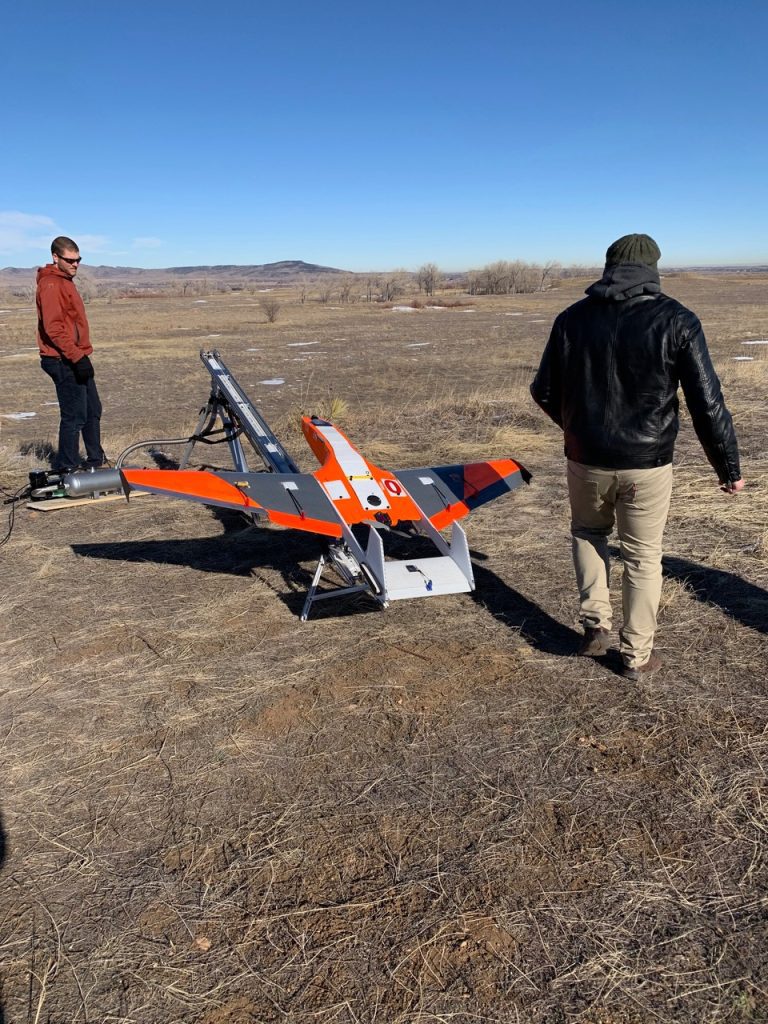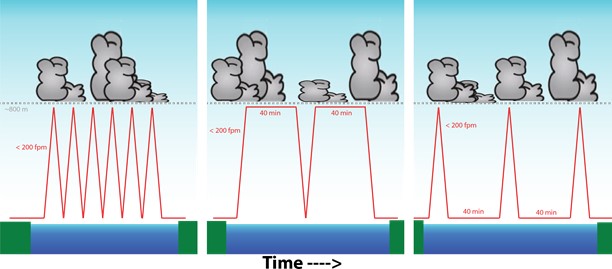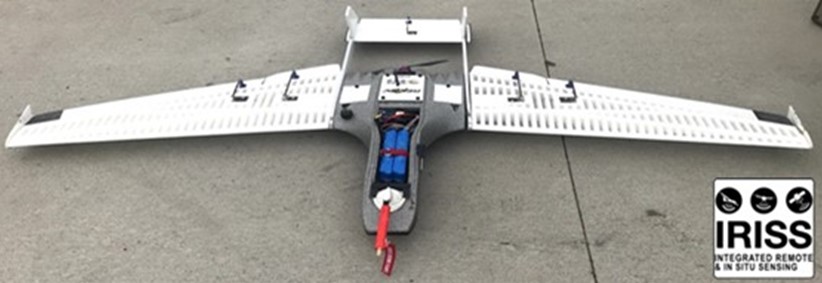ARTICLE AND FIGURES PROVIDED BY GIJS DE BOER (ESRL/PSD/CIRES/CU) AND JANET INTRIERI (ESRL/PSD)
Background
The oceans and the structure of the atmospheric boundary layer (ABL) help to drive shallow convection and the liquid clouds that form in the lower tropical atmosphere. These clouds, which are commonly found over the tropical oceans strongly, influence weather and climate across a variety of time scales. The interaction between shallow convection and the ocean’s surface layers is a two-way street: the clouds and turbulence generated by shallow convection influence Sea Surface Temperatures (SST), and at the same time, shallow convection is itself controlled in part by SST and the exchange of energy between the air and overlying sea. This project, dubbed the Atlantic Tradewind Ocean–Atmosphere Mesoscale Interaction Campaign (ATOMIC), is designed to investigate the structure and dynamics of shallow convection and the exchanges of energy between the clouds, the ABL, and the underlying ocean using a variety of different observational capabilities. Included are an Unmanned Aircraft System (UAS), which will conduct routine flights in the lower atmosphere to provide a level of detail on these interactions not easily obtained with larger research aircraft and remote sensing equipment.
Measurements to support studies related to coupling between the surface, lower atmosphere and overlying clouds were initially proposed to be conducted using the NOAA/University of Colorado miniFlux sensor package installed on the L3Harris Latitude FVR-55 Unmanned Aircraft System (UAS). This platform was to be deployed from the NOAA Ship Ronald H. Brown in the tropical Atlantic Ocean east of Barbados, with measurements from miniFlux complementing simultaneous observations from ship’s in-situ and remote sensors. However, challenges associated with the deployment of the FVR-55 eliminated it as a platform that could be used during ATOMIC, creating a critical gap in observations.
This particular project fills this gap using an alternative aircraft, deployed from a coastal location in Barbados. As detailed below, the University of Colorado is deploying the RAAVEN (Robust Autonomous Aerial Vehicle – Endurant and Nimble) aircraft, with miniFlux sensors installed on the airframe. The RAAVEN will operate from Morgan Lewis, a coastal location on the eastern shore of Barbados, conducting line-of-sight flight operations in the oceanic boundary layer east of the island. This undisturbed region of air will have the characteristics of the atmosphere that would have been sampled around the ship using the FVR-55, as it is upwind of the island, with the nearest major land masses being across the Atlantic Ocean. In combination with observations from the land-based Barbados Cloud Observatory (BCO), ship-borne measurements from the NOAA Ship Ronald H. Brown, and aerial observations from the NOAA WP-3D research aircraft, these small UAS (sUAS) observations support the pursuit of research questions related to the influence of air-sea interactions and the structure of clouds at the Barbadian coastline. Additionally, these measurements provide a close and direct connection with complementary research being undertaken as part of the European Elucidating the role of cloud-circulation coupling in climate (EUREC4A) field program, which includes observations at the BCO and additional sampling in the offshore environment using ships and research aircraft.
Operations
Supported with UAS Program Office funding, a team from the University of Colorado Boulder will deploy the RAAVEN sUAS (Figure 1) from Barbados between 19 January and 17 February 2020. Launch and retrieval will occur from the shore at a field and the adjacent beach in Morgan Lewis, Barbados (Figures 2).



The RAAVEN is a foam-construction, belly-landing aircraft and therefore does not require a runway, and only a limited amount of open space for operations. This is particularly true in conditions as expected on Barbados, where the aircraft will be catapult-launched (Figure 3) and can be landed into the prevailing winds that are steadily blowing between 10-20 mph.


After initial low-altitude checkout flights overhead at the launch/recovery site, the primary scientific flight patterns will be conducted over the near-shore Atlantic Ocean, as illustrated in Figure 4.


The RAAVEN flight patterns will occur over the ocean, but close to shore, where the aircraft can measure winds and turbulence in the boundary layer, dynamics and fluxes at cloud base, and surface-air exchange. These measurements will complement those being made at the Barbados Cloud Observatory (BCO) (about 20 km to the SE), those being made by other UAS (including in-cloud measurements from the French X6 Skywalker and near-surface measurements farther offshore from the BOREAL unmanned aerial vehicle), and measurements being collected by the ships and crewed aircraft offshore. While the ocean assets will not be able to come directly to shore, they will provide some insight into the structure of the upper ocean offshore that is generating the atmosphere we are observing directly upwind from Barbados.
Relevance to NOAA
A large component of forecast uncertainties results from improper model physics. Therefore, improving the representation of physical processes and ultimately, physical parameterizations, is a critical step towards better predictive skill across the weather and climate scales. High quality measurements of boundary layer turbulent fluxes and surface temperatures over oceanic environments is one of the critical observations needed for assessing coupled model physics.
RAAVEN miniFlux measurements can directly contribute to advancing our scientific understanding relevant to NOAA forecasting efforts across weather and climate scales. Specifically, information on the vertical distribution of dynamic (momentum) and thermodynamic fields (heat fluxes), spatial and temporal variation of PBL height, formation and maintenance of tropical clouds, and ABL stability can be used to evaluate boundary layer and cloud parameterizations. This to examine and better understand the physical processes supporting the organization of tropical clouds and to provide guidance on model physics development. Improving model physics is one of the major goals articulated in NOAA’s Unified Forecast System (UFS) Goals and Priorities document. In response, NOAA Physical Sciences Division (PSD), Environmental Modeling Center (EMC), Geophysical Fluid Dynamics Laboratory (GFDL), Global Systems Division (GSD) and others are presently involved in the testing and evaluation of UFS model physics. Measurements obtained from UAS-based deployments of miniFlux during ATOMIC will be useful for microphysical parameterization evaluations as part of this effort.

